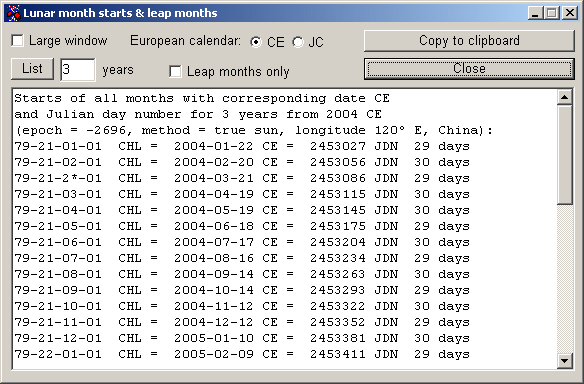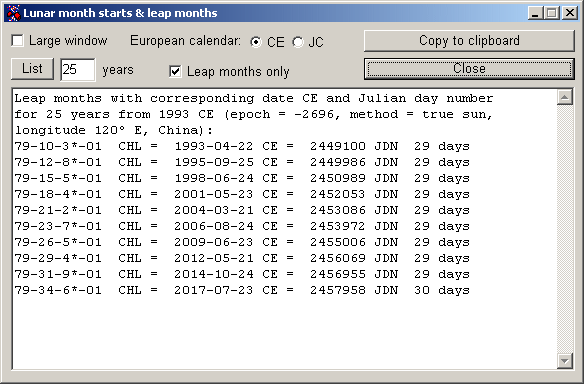|
Clicking on the 'List lunar month starts & leap months' button brings up a list of the Chinese dates of the starts of all months (with corresponding Western date and Julian day number) for a period of years centered on the year currently displayed, e.g., if 2005-05-05 CE is currently displayed then we get:


If we select the Vietnamese lunar calendar we find, in the list of leap months, a difference from the Chinese Calendar:

We may compare the results produced by this software for leap months with results previously published. On page 30 of Prof. Helmer Aslaksen's The Mathematics of the Chinese Calendar there is a table (Table 24) of "Leap years and leap months between 1824 and 2050". 91 of the 227 years in this range have leap months. Of those 91 leap years this software agrees with Prof. Aslaksen regarding the number of the leap month in all 91 cases (including the case of the anomalous 2033 CE).
| Next: Dates, times and CJDs of dark moons and solar terms | |
| Contents | Hermetic Systems Home Page |